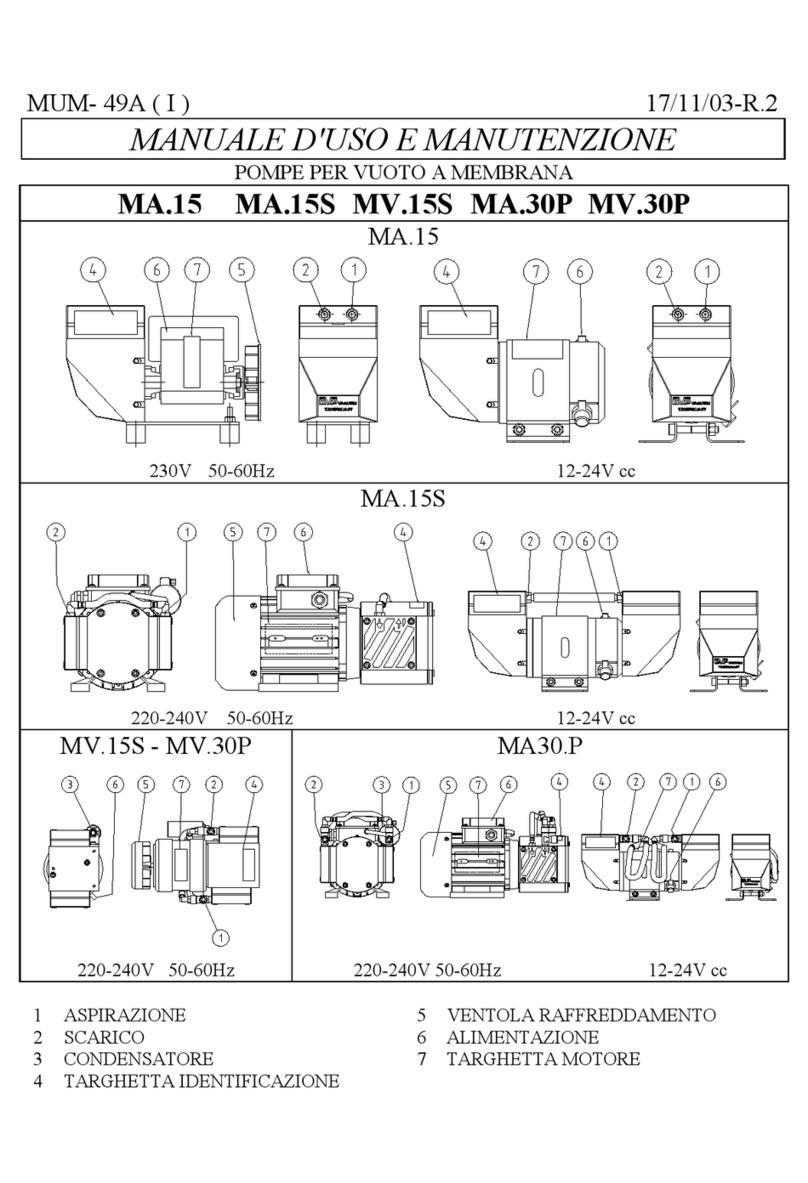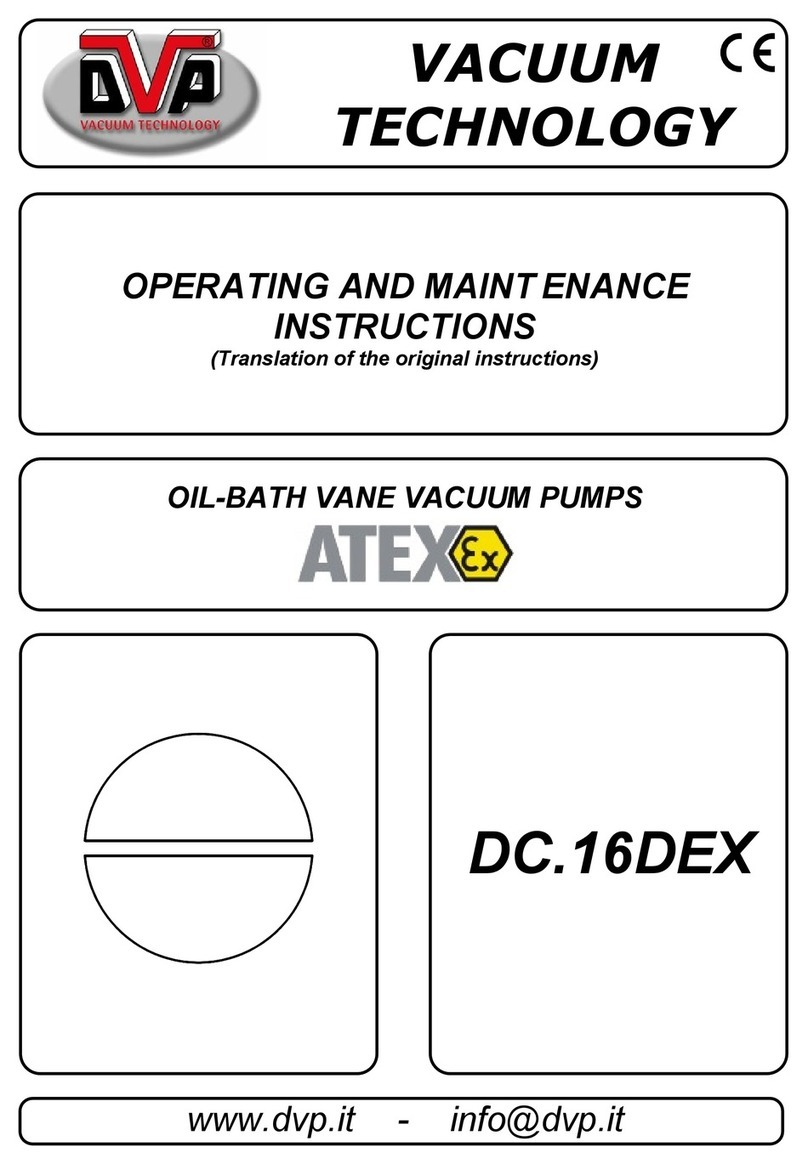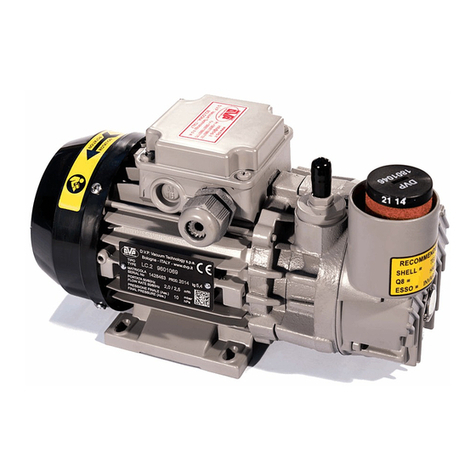
Operating and Maintenance Instructions
EN
LC 2 – LC 4 – LC 8 – LC 12 – LC 20
1
8702036 – 01/04/2022 – R.10 www.dvppumps.com
INDEX
1INTRODUCTION....................................................................................................................................................2
1.1 GENERAL
INFORMATION..............................................................................................................................2
1.2 MANUFACTURER
INFORMATION ................................................................................................................2
1.3 METHOD
OF
CONSULTATION ......................................................................................................................2
1.4 PERSONNEL
QUALIFICATIONS....................................................................................................................2
1.5 PERSONAL
PROTECTION
EQUIPMENT ......................................................................................................3
1.6 INFORMATION
PLATE ...................................................................................................................................3
2SAFETY .................................................................................................................................................................3
2.1 GENERAL
WARNINGS ...................................................................................................................................3
2.2 RESIDUAL
RISKS ...........................................................................................................................................3
2.3 PICTOGRAMS.................................................................................................................................................4
3PUMP DESCRIPTION ...........................................................................................................................................5
3.1 INTENTED
USE
AND
CONTRAINDICATIONS...............................................................................................5
3.1.1 INTENTED USE ........................................................................................................................................5
3.1.2 CONTRAINDICATIONS............................................................................................................................5
3.2 FKM
VERSION ................................................................................................................................................5
3.3 DIMENSIONS
AND
CHARACTERISTICS.......................................................................................................6
3.3.1 Model: LC 2 – LC 4 ..................................................................................................................................6
3.3.2 Model: LC 8 ..............................................................................................................................................7
3.3.3 Model: LC 12 ............................................................................................................................................8
3.3.4 Model: LC 20 ............................................................................................................................................9
3.4 NOISE
EMISSION .........................................................................................................................................10
4INSTALLATION ...................................................................................................................................................10
4.1 RECEIPT
AND
CONTENT
VERIFICATION ..................................................................................................10
4.2 PACKAGING .................................................................................................................................................10
4.3 TRANSPORT
AND
HANDLING.....................................................................................................................10
4.4 STORAGE .....................................................................................................................................................10
4.5 ENVIRONMENTAL
CONDITIONS ................................................................................................................11
4.6 PUMP
INSTALLATION ..................................................................................................................................11
4.7 USER
SYSTEM .............................................................................................................................................11
4.8 CONNECTION...............................................................................................................................................11
4.8.1 INTAKE AND OUTLET CONNECTIONS................................................................................................11
4.8.2 WIRING ...................................................................................................................................................12
5OPERATING INSTRUCTIONS............................................................................................................................13
5.1 OPERATION..................................................................................................................................................13
5.1.1 FILLING THE OIL TANK .........................................................................................................................13
5.1.2 START-UP ..............................................................................................................................................13
5.1.3 STOP.......................................................................................................................................................13
5.1.4 PUMPING WATER VAPOUR .................................................................................................................13
6MAINTENANCE...................................................................................................................................................14
6.1 GENERAL
WARNINGS .................................................................................................................................14
6.2 MAINTENANCE
TABLE ................................................................................................................................14
6.2.1 CHECK OIL LEVEL.................................................................................................................................14
6.2.2 CHANGE OIL ..........................................................................................................................................14
6.2.3 CLEAN MOTOR FAN GUARD EAND CLEAN THE PUMP....................................................................15
6.2.4 CHANGE THE AIR EXHAUST FILTER ..................................................................................................15
6.2.5 CHANGE VANES....................................................................................................................................15
6.3 SPARE
PARTS..............................................................................................................................................15
7HOW TO RETURN THE PUMP...........................................................................................................................16
8DISMANTLING ....................................................................................................................................................16
9TROUBLESHOOTING.........................................................................................................................................17

































